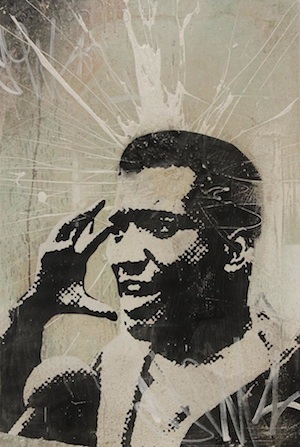Capitol Hill Offices Lagging in Staff Diversity
/Gearing up for the debate over extending federal transportation programs last spring, Jose Parra, deputy communications director for Senate Majority Leader Harry Reid, listened to his boss run through a list of the consequences of the proposed cuts. He couldn’t help but chime in.
“Hispanic communities are overrepresented in the construction industry,” Parra said he told those gathered, pointing out that the cuts would be disproportionately borne by Hispanic-Americans. “Thirty percent of Hispanic firms are construction firms.”
“That point would have gone unnoticed during our discussions if there hadn’t been minority staffers present,” Parra recently told National Journal Daily.
But despite the benefits of bringing a variety of voices to the table, racial diversity in Capitol Hill offices continues to lag behind corporate America, and most minority staffers are left only dreaming of the day they earn a position as senior as Parra’s.
Members of Congress are not required to report demographic details on staffers, so no definitive tally is available, but two voluntary surveys found minority hiring on the Hill to be surprisingly low, especially at senior levels.
National Journal’s “Hill People” issue in 2011 profiled 288 top aides who work for congressional leaders and House and Senate committees, and only 7 percent of them were identified as Asian, black, or Hispanic. In the private sector, these same groups collectively held 12 percent of top managerial positions in 2010, according to the Equal Employment Opportunity Commission.
Diversity on the Hill seems to increase further down the totem pole, with 17 percent of House staff assistants, an entry-level position, identifying themselves as a race other than white in the latest House Compensation Study from 2010. Still, 34 percent of entry-level professionals in the private sector in 2010 were minorities, according to the EEOC, compared to the 2010 Census finding that nonwhites made up 28 percent of the U.S. population.
Weldon Rougeau, who has worked in both the upper levels of Congress and the top rungs of corporate America, says members do not have the same incentives as CEOs to focus on staff diversity. Rougeau was one of the first black staffers on the Hill in the 1970s, beginning as a legislative aide and later working as chief of staff to then-Rep. William Jefferson, D-La. Rougeau left the Hill in the 1980s to help blaze a trail in another arena, becoming one of the first African-American vice presidents at American Express. He said that while he was there, hiring practices at the company began to favor more racial diversity in senior-level positions. He added that he has yet to see this same push spread widely across the Hill, even after his return to serve as CEO of the Congressional Black Caucus Foundation in 2001.
The decision to focus on diversity among top management at American Express came about simply because it was “smart business,’’ he said.
“We used to call them ‘emerging markets,’ ” said Rougeau, who is now retired. “For all practical purposes, they have in fact emerged. They are not being ignored by companies anymore. They are huge economic forces, and companies who recognized that started hiring people who knew something about these markets.”
Unlike CEOs, members of Congress do not have customers, a board of directors, or shareholders to answer to. Instead, they have constituents, who are more likely to visit a member’s office in their state or district than to make the trek to Washington. Rep. Steve Cohen, D-Tenn., who is white, represents a district that is 71 percent minority—one of the highest levels in the country. He told National Journal that hiring staffers who look like his constituents is more important in home offices than on the Hill. Cohen has three black, five white, and one Latino staffer working in his Capitol Hill office, compared with six black, two white, and one Asian-American staffer in his Memphis office.
“In Memphis, you want to have people [on staff] that represent the district. I have staffers there who go out with me in the district when I’m home, and we know what people are thinking,” Cohen said. “In Washington, we’re dealing with issues that pertain to everyone: health care, jobs, housing, veterans’ affairs. [When hiring], we look at people’s backgrounds, their expertise, and their experience on the Hill.”
But many otherwise qualified minority applicants lack Hill experience because they never make it to the first rung of the legislative ladder: an internship. Most Capitol Hill internships are unpaid, which presents a barrier to potential staffers who cannot afford to spend a summer living in the expensive Washington metro area without a salary. Whites are more likely to be able to afford this sacrifice: In 2011, the poverty rate for whites was 9.8 percent, compared with 27.6 percent for blacks, 25.3 percent for Hispanics, and 12.3 percent for Asian-Americans, according to Census figures.
The homogeneity of professional networks that lead people to the Hill poses another hurdle. David McCallum, who as Reid’s deputy chief of staff makes hiring decisions for the Senate’s top Democrat, said most of his colleagues simply send word around to other chiefs of staff and members of their Washington networks when looking to fill an opening. The process is fast and efficient, but it brings in too few applications from minorities, he said.
Even minorities who are already on the Hill are told to broaden their networks and look outside the Congressional Black Caucus, Congressional Hispanic Caucus, and Congressional Asian Pacific American Caucus—the so-called Tri-Caucus groups—if they want to rise through the ranks. At a recent panel hosted by the Congressional Black Associates, a former staffer passed on this advice to a young black woman who asked how to get ahead: “Get a mentor who does not look like you.”





































































































































































































































































